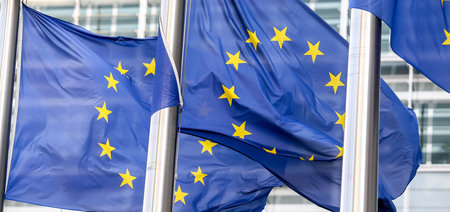
What is the legal basis at European level for methane and ammonia?
According to the European Environment Agency (EEA, 2018), air pollution in many European countries still exceeds the limits and guidelines set by the European Union and the World Health Organisation (WHO). Several Member States exceeded the national ammonia ceilings in 2016, including Croatia, Germany and Spain. EU average ammonia emissions (NH3) rose by 0.5 percent between 2015 and 2016, mainly due to the use of manure and synthetic fertilizers. Italy, Great Britain and Ireland recorded the highest increases.
The EU's clean air policy is based on three pillars:
- Ambient Air Quality Directive (Directive 2008/50/EC)
- National Emission Reduction Commitments (EU Directive 2016/2284, so-called NEC Directive)
- Industrial Emission Directive (EU Directive 2010/75) and best available techniques to be applied (BREFs)
None of the three sets limit values for the concentration of ammonia and methane in ambient air. However, in the Air Quality Directive, the pollutants resulting from the gases, particulate matter and ozone, are regulated and must not exceed certain limit values.
With regard to the sources of ammonia, European legislators have taken two approaches. Firstly, the conclusions on Best Available Techniques (BAT) for the intensive rearing of poultry and pigs set maximum emission levels to be respected by farms of a certain size. Secondly, under the NEC Directive, the total ammonia emissions of member states is to be reduced. These requirements were first adopted in the Gothenburg Protocol and then anchored in the NEC Directive at European level.
The NEC Directive
In the 7th Environment Action Programme, the European Union set itself the objective of achieving a level of air quality that does not give rise to significant negative impacts and risks to human health and the environment. In December 2016, the new Directive (EU) 2016/2284 on the reduction of national emissions of certain atmospheric pollutants (NEC Directive, National Emission Ceilings) entered into force. It sets national reduction commitments for anthropogenic emissions of sulphur dioxide (SO2), nitrogen oxides (NOx), volatile organic compounds without methane (NMVOC), ammonia (NH3) and particulate matter (PM2,5). Germany and France, the largest emitters of ammonia in the EU, must reduce their ammonia emissions by 29 percent and 13 percent respectively by 2030 compared with 2005. The European Union has set itself the target of a reduction of 19 percent.
The Directive imposes reporting obligations on the Member States. In addition to the annual emissions reporting, emission forecasts must be reported every two years. A national air pollution control programme (NAPCP) shall be established and updated at least every four years. It must contain national emission forecasts, strategies and measures for reducing emissions, including an assessment of the reduction potential. The first national air pollution control programme is to be submitted to the EU Commission in April 2019.
Initial ambitions to establish reduction obligations for methane were rejected again in the course of drafting the new NEC Directive.

European climate change policy
Despite the climate-damaging effects of methane, there are no concrete national or international reduction commitments to date. Methane emissions are only indirectly addressed since they are included as a greenhouse gas within the definition ofCO2 equivalents.The Effort Sharing Regulation sets the minimum contributions of Member States to emission reductions for the period 2021 to 2030 to comply with the Paris Climate Convention. The agricultural sector must therefore reduce its greenhouse gas emissions by about 30 percent compared with 1990 levels. Measures to reduce methane offer the opportunity to make decisive advances in both climate protection and air pollution control.

